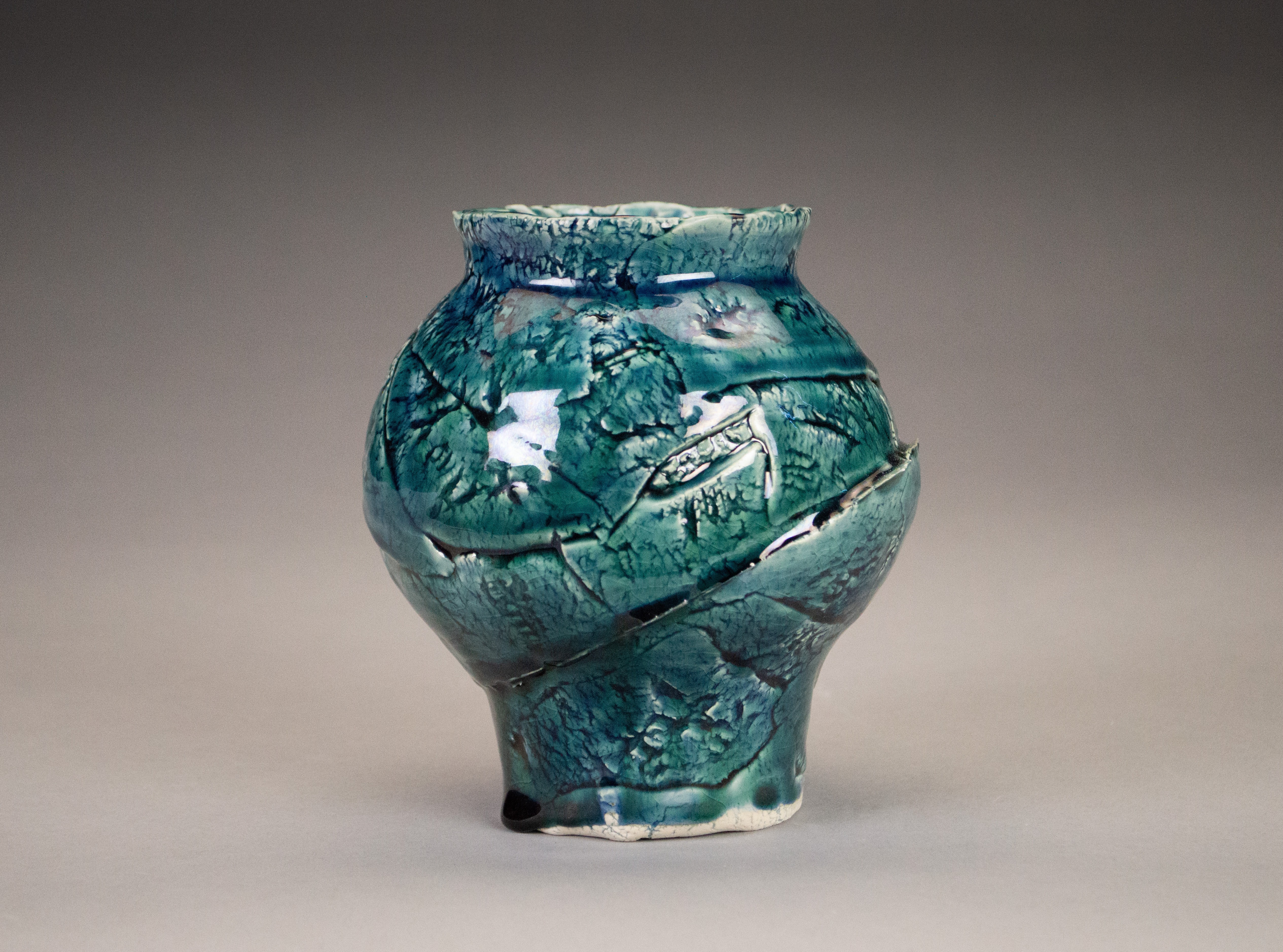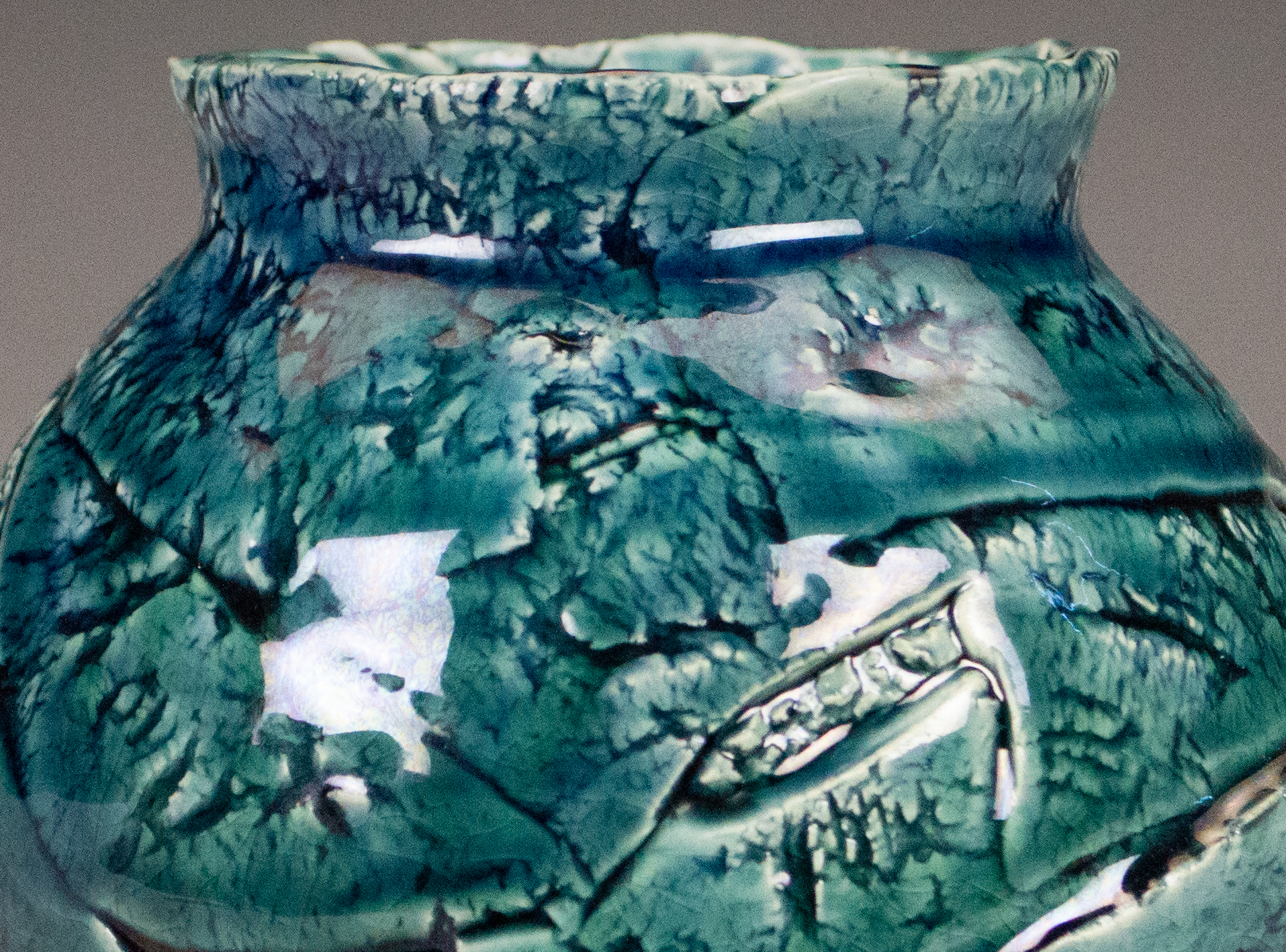Materials: Ceramics (sodafired stoneware, sodafired porcelain, wadding, glaze, soda glaze), shards (things that melted in the kiln: staples, glass, steel, brass), wood, burnt wood, found wood, epoxy, screws, steel rods, ink, paper(notepad, wrapping paper, toilet paper, newsprint, found paper, cardboard), glue (craft glue, wood glue, hot glue), concrete, sodium carbonate, calcium carbonate, silicates.
Statement updated 12/4
Ceramics, much like history, might be understood as a succession of disasters. The often-punishing unpredictability of the medium is at the center of my practice, in which destruction and debris are embraced as inherent, and even vital aspects of artmaking. My work takes shape via shards and fragments, through collecting, stacking, and mending material like layers of sediment, or scabs — the protection and reconstruction of wounded skin. Pieces are compiled, wrapped, and supported by a range of materials, including clay, cardboard, and steel, forming objects that memorialize their own breakage, becoming something new. The medium becomes an ongoing event or occasion of sorts, the fragility and peril of the material allowing me to see the rubble of being as a starting place.
Through my dialogue with the debris, I know how vital a foothold as small as a shard can be — shards of history, memory, and pain. As a young Chinese immigrant, I sometimes think of my own life as an unfolding against a landscape of broken-off stories—collective narratives of natural disasters and political upheaval, and the more personal, fragmented memories of migration, domestic violence, and family trauma.
Making ceramics can feel a lot like a fresh start in a country in which you don’t know the language or mores yet. It can be vulnerable-making and tedious; it can be a lonely venture filled with unexpected peril. Clay is a material that blows up, splatters, and collapses. A misstep easily results in kiln-loads full of shattering and crazing; exploded shards and bits stuck to other pieces — all of which can lead to heartbreak and tears.
My dialogue with breakage and debris acts as both a metaphor and a guide for navigating the scars and ruptures of cross-generational wounds, which become integrated as part of an unwieldy, ever-evolving self — stuck in a constantly in flux, tottering between one continent and another, belonging to neither. And yet I’ve come to believe there are riches to be found in the ad-hoc, in the in-between, in the wonky.
To me, the artmaking process is a ritual of improvisation and reconstruction, of reflection and unlearning. It has become, increasingly, a modality of healing. Through material exploration, breakage becomes an essential element, the finished form a testament to survival, or a new definition of beauty.
For me, the ceramics process is one of migration, where every step is a unique way of moving forward, and where to be lost is never to be wrong, but simply more.




“In the face of the obscene, explicit malice of the jungle, which lacks only dinosaurs as punctuation, I feel like a half-finished, poorly expressed sentence in a cheap novel.”
― Werner Herzog
︎ Clay: Porcelain
︎ Glaze: Ryze’s Mystique Oribe Green
︎ Look-alike: Cabbage (maybe just a little bit)
︎ Cracks and Crevices: Are Words.
― Werner Herzog
︎ Clay: Porcelain
︎ Glaze: Ryze’s Mystique Oribe Green
︎ Look-alike: Cabbage (maybe just a little bit)
︎ Cracks and Crevices: Are Words.